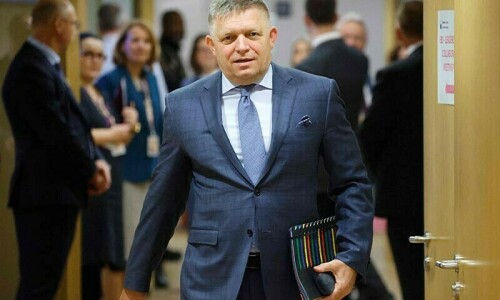THE renewed support of the US for the $14.5bn Diamer-Bhasha dam has revived hopes of an early start to work on this crucial hydropower project. In November, the US had agreed to give $200m for undertaking preliminary work on the project during the finance minister’s visit to Washington. Now, says the top Wapda official, the US has agreed to provide financial assistance of $3.5bn — $250m a year — over the period of its construction. The project has been facing delays due to the lack of foreign funding since 2009. Even multilateral lenders, e.g. the Asian Development Bank, were reluctant to give money for the project, partly because it was to be constructed on the ‘disputed’ territory of Gilgit-Baltistan. Some lenders wanted Islamabad to first obtain a ‘no-objection certificate’ from India, the other party to the dispute.
If the promised US assistance for the project materialises, the remaining foreign funding requirement for the dam will be reduced to $4.5bn. This will be raised by persuading Chinese, Korean and Turkish investors to come on board as financiers or contractors. The US interest should make it easier for foreign investors to participate with confidence in the construction of the world’s highest roller compacted concrete dam. The project is important for Pakistan because it will produce 4,500MW of electricity, store an extra 8,500,000 acre feet of water for irrigation, extend the life of Tarbela located downstream by 35 years and control flood damage. With more than 40 per cent of the population — over 64 million people — without access to electricity and the rest facing up to 20 hours of loadshedding during summer, the addition of each and every megawatt is important if the country is to achieve economic growth, create jobs and reduce poverty. The dam is also crucial because it will help change the current energy mix by considerably raising the share of hydropower from the existing 10.6 per cent and decreasing dependence on expensive imported oil. Wapda’s Vision 2025 also envisages raising the share of hydropower in the country’s energy mix to 50 per cent.
According to some estimates, Pakistan has the potential to generate up to 50,000MW of hydropower compared to the existing installed capacity of just under 6,500MW. The massive gap means that the exploitation of this potential can substantially cut the cost of electricity for domestic and industrial consumers and help the economy grow at a faster pace. It wouldn’t be wrong to say that much of Pakistan’s future depends upon the development of Bhasha and other small and large hydropower projects.












































Dear visitor, the comments section is undergoing an overhaul and will return soon.